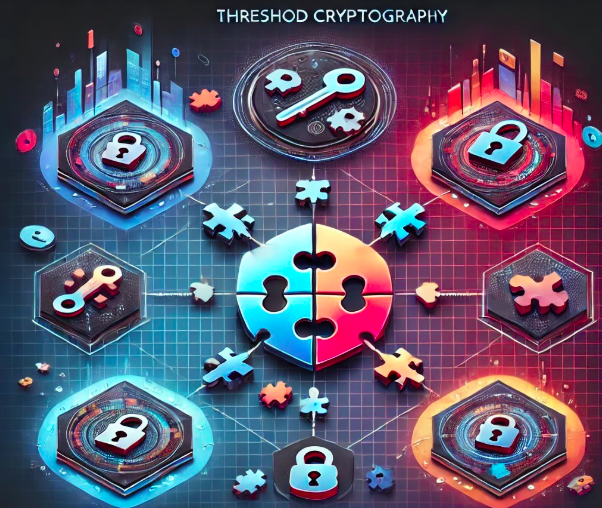
Unlocking Security: A Guide to Threshold Cryptography
Threshold cryptography is a powerful technique that enhances security, fault tolerance, and privacy by distributing cryptographic operations among multiple participants. Unlike traditional cryptographic systems that depend on a single key holder, threshold cryptography divides a cryptographic key into several shares, requiring a subset of those shares to perform operations such as decryption or signing. This approach not only secures sensitive operations but also reduces single points of failure.
How Threshold Cryptography Works
Threshold cryptography utilizes secret sharing schemes, such as Shamir’s Secret Sharing. A secret key is divided into ′n′ shares and a threshold ′t′ (where t ≤ n) is established. At least ′t′ shares are necessary to reconstruct the key or carry out cryptographic operations. This ensures that no single party has complete control, significantly enhancing security and resilience [2].
Key Features and Benefits:
-
Fault Tolerance: Operations can continue even if some participants are unavailable as long as the threshold is met.
-
Enhanced Security: The key is never stored in one place, mitigating the risk of single-point compromises.
-
Collusion Resistance: Multiple entities must cooperate to misuse the key, reducing insider threats.
-
Privacy Preservation: Sensitive operations can be performed without exposing individual key shares.
Applications of Threshold Cryptography:
-
Secure Digital Signatures: Multiple parties sign documents collaboratively without sharing their private keys [5].
-
Distributed Key Management: Reduces exposure of cryptographic keys in cloud services and blockchain wallets [4].
-
Multiparty Computation (MPC): Enables privacy-preserving operations in joint computations without revealing individual inputs [3].
Real-World Use Cases:
-
Cryptocurrency Wallets: Private key shares are distributed among multiple entities, reducing theft risks [6].
-
Certificate Authorities (CAs): Protects digital certificate signing keys through distributed control.
-
Secure Electronic Voting: Enhances vote integrity and privacy by distributing decryption responsibilities [1].
Challenges and Considerations:
-
Performance Overhead: Threshold schemes can introduce computational and network overhead.
-
Share Management: Secure storage and transmission of key shares are crucial to prevent exposure.
-
Complex Implementation: Integrating threshold cryptography into existing systems requires careful design and expertise.
Conclusion
Threshold cryptography is a cornerstone of modern cryptographic security, providing a robust method for protecting digital operations through distributed trust. Its applications extend across financial services, cloud security, blockchain, and secure voting, making it an essential tool for safeguarding digital assets and communications. As cyber threats continue to evolve, adopting threshold cryptography can strengthen systems against attacks and insider threats, ensuring both security and privacy in digital ecosystems.
References
Edited By: Windhya Rankothge, PhD, Canadian Institute for Cybersecurity